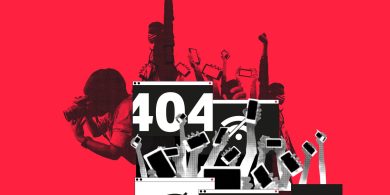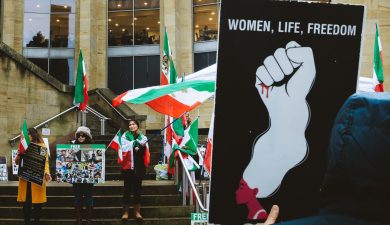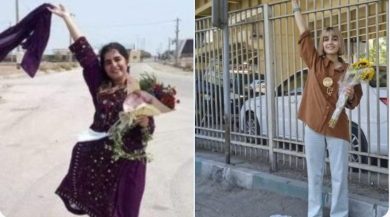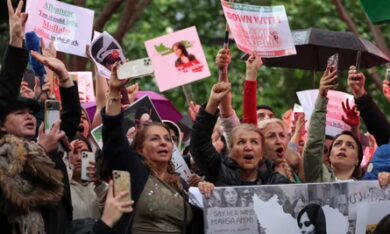In Iran, women’s rights have been systematically eroded by an institution that wields extraordinary power: the Islamic Revolutionary Guard Corps (IRGC). Beyond its military and economic reach, the IRGC plays a central role in controlling Iranian society, with gender oppression at the core of its strategy. By enforcing compulsory hijab laws, suppressing protests, and deploying a range of tactics designed to instill fear, the IRGC has become a primary enforcer of state patriarchy.
However, Iranian women are resisting. Despite the IRGC’s violent crackdowns, women continue to challenge the regime’s control, transforming their struggle into a global symbol of defiance. The “Women, Life, Freedom” movement, which gained momentum after the death of Mahsa Amini in 2022, has exposed the brutal tactics used by the IRGC to maintain power.
This article will explore:
• How the IRGC suppresses women’s rights through fear and control.
• The tools of oppression it employs, from surveillance to violence.
• The courageous resistance of Iranian women.
• The role of the global community in supporting Iran’s fight for freedom.
1. The IRGC’s Role in Gender Oppression
A. The IRGC as an Enforcer of Patriarchy
The IRGC was created after the 1979 Islamic Revolution to protect the regime’s ideological foundations, including its patriarchal vision for Iranian society. The regime’s interpretation of Islamic law places severe restrictions on women, and the IRGC ensures that these are upheld by:
• Enforcing mandatory hijab laws, turning women’s bodies into battlegrounds for state control.
• Policing morality through its Basij militia, which patrols public spaces and monitors women’s behavior.
• Cracking down on women’s rights activists and feminist movements that challenge state narratives.
The IRGC’s role extends beyond military activities; it is deeply embedded in Iran’s social fabric, shaping laws, norms, and daily life to limit women’s freedoms.
B. Compulsory Hijab: A Tool of Control
The mandatory hijab law is perhaps the most visible symbol of state control over women’s bodies. The IRGC enforces this policy aggressively:
• Women are arrested, fined, or beaten for “improper” hijab.
• The morality police, working with the IRGC, patrol streets, schools, and workplaces, ensuring compliance.
• The hijab law serves as a political statement, reinforcing the regime’s claim over women’s lives.
The hijab in this context is not a religious symbol but a manifestation of state power, used to instill fear and submission.
2. Tactics of Fear: How the IRGC Controls Women
The IRGC’s control mechanisms are designed to create a climate of constant fear. Through intimidation, violence, and surveillance, the IRGC ensures that women understand the risks of defiance.
A. Surveillance and Digital Control
The IRGC has invested heavily in cybersecurity and digital surveillance, monitoring women’s activities both online and offline:
• Social media profiles are tracked, with women being arrested for posting images without hijab or criticizing the regime.
• Encrypted apps used by activists are targeted through state-sponsored hacking.
• The IRGC frequently imposes internet blackouts during periods of unrest, cutting off communication and organizing efforts.
This digital oppression ensures that women’s private lives are never truly private, fostering self-censorship and fear.
B. Violence and Public Repression
Fear of physical violence is one of the most effective tools the IRGC uses:
• Protesters, especially women, are met with brutal force, including beatings, shootings, and arrests.
• Detention centers, such as Evin Prison, are notorious for sexual abuse, torture, and psychological trauma inflicted on female prisoners.
• Women detained by the IRGC often face public shaming, forced to make televised confessions that humiliate and degrade.
These tactics are designed not just to punish dissenters but to deter future resistance by making examples of those who speak out.
C. Targeting Families and Communities
The IRGC extends its tactics of fear by targeting the families of women who resist:
• Families of activists are harassed, detained, or threatened with loss of employment and access to education.
• In many cases, women are forced to remain silent to protect their loved ones from state retaliation.
This approach ensures that resistance is isolated, and the consequences of defiance extend far beyond the individual.
3. Resistance Against Fear: Stories of Defiance
Despite the IRGC’s tactics of control, Iranian women continue to resist. Their courageous acts of defiance have become a rallying cry for gender equality and freedom, not just in Iran but across the world.
A. Mahsa Amini: The Catalyst for a Movement
In September 2022, Mahsa Amini, a 22-year-old Kurdish woman, died after being detained by the morality police for allegedly violating hijab rules. Her death sparked nationwide protests, with women removing their hijabs, cutting their hair, and marching in the streets.
The protests gave rise to the slogan:
“Women, Life, Freedom” (“Zan, Zendegi, Azadi”)
This movement exposed the brutality of the IRGC, which responded with:
• Live fire on protesters, resulting in hundreds of deaths, including many women.
• Mass arrests, with many women subjected to sexual violence in custody.
• Severe crackdowns in regions like Kurdistan and Baluchistan, where ethnic minority women have faced even harsher repression.
Despite this, the “Women, Life, Freedom” movement continues to grow, showing the regime’s tactics are no longer enough to suppress resistance.
B. Narges Mohammadi: Courage from Behind Bars
Narges Mohammadi, a leading human rights activist, has spent years in IRGC prisons for her work against gender discrimination and the death penalty.
• In 2023, Narges Mohammadi was awarded the Nobel Peace Prize, bringing global attention to her cause.
• From inside prison, she continues to write about the IRGC’s abuses, exposing the torture and rape faced by women detainees.
Her story shows that even imprisonment cannot silence the voices of those committed to justice.
C. Masih Alinejad: The Digital Voice of Freedom
Masih Alinejad, an Iranian journalist living in exile, uses social media to amplify the voices of Iranian women:
• Her #MyStealthyFreedom campaign encouraged women to post photos without hijab, openly defying state laws.
• Despite IRGC assassination and kidnapping attempts, she continues to speak out, ensuring that the world hears the voices of Iranian women.
• Alinejad’s work shows that digital spaces, even under threat, can become powerful tools for resistance.
4. Everyday Resistance: Defying Fear in Daily Life
Resistance in Iran is not only about mass protests; it also happens in everyday acts:
• Walking without hijab in public, despite the risk of arrest.
• Refusing gender segregation in schools, parks, and public spaces.
• Driving alone or participating in sports, activities often denied to women.
These small but significant acts represent a larger rejection of the IRGC’s control and prove that change is being demanded at every level of Iranian society.
5. The Role of Social Media in Women-Led Resistance
In the face of IRGC surveillance and censorship, social media has become the lifeline of Iran’s women-led resistance:
• Hashtags like #WomenLifeFreedom and #MahsaAmini have connected millions worldwide, spreading the message of freedom and equality.
• Videos of protests, uploaded in real-time, have exposed IRGC brutality to the global community.
• Digital campaigns have inspired solidarity protests across the world, from London to New York.
The IRGC’s attempts to suppress digital resistance through internet shutdowns and cyberattacks have failed, as Iranian women find new ways to be heard.
6. How the Global Community Can Support Iranian Women
A. Designate the IRGC as a Terrorist Organization
• The United States has already designated the IRGC as an FTO.
• Other countries, especially in Europe, must follow. Such designations would:
- Cut off funding for repression.
- Limit IRGC influence globally.
- Send a clear message that gender oppression will not be tolerated.
B. Provide Tools for Digital Freedom
• The global tech community must provide:
• VPNs and encrypted apps to bypass censorship.
• Satellite internet access during state-imposed blackouts.
• Protecting digital freedom is essential for amplifying women’s voices and documenting human rights violations.
C. Impose Targeted Sanctions
• IRGC leaders responsible for gender-based oppression should face travel bans and asset freezes.
• Sanctions should also target businesses linked to the IRGC’s economic empire, cutting off the resources used to fund repression.
D. Amplify Iranian Voices
• Media organizations must prioritize stories from Iran, highlighting the role of women in leading the resistance.
• International institutions should recognize Iranian women’s contributions to the global struggle for gender equality.
Conclusion: The Courage That Cannot Be Silenced
The IRGC’s crackdown on women’s rights has been brutal and systematic, designed to instill fear and maintain control. Yet, the courage of Iranian women has shown that no amount of repression can silence the demand for freedom.
From Mahsa Amini, whose death sparked a nationwide revolution, to activists like Narges Mohammadi and Masih Alinejad, Iranian women have become the face of resistance. Their voices are clear:
“We will not be silenced. Our fight for freedom, dignity, and equality continues until Iran is free.”
Join Our Newsletter!
Stay informed with the latest updates, news, and ways to take action in the fight for justice and global security. Sign up now to get updates delivered straight to your inbox!





